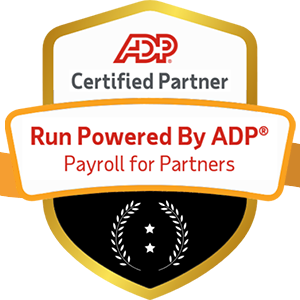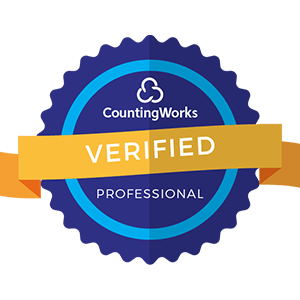
In today's corporate landscape, promoting an inclusive work culture that makes employees feel a sense of belonging has evolved from simply being the right thing to do morally to a strategic priority that impacts the bottom line. When team members feel respected, valued, and supported, engagement, productivity, and retention are critical drivers of organizational success.
The interdependent realms of Human Resources (HR), Finance, and Payroll each wield significant influence in shaping employees' sense of inclusion. By aligning policies, practices, and systems, these departments can synergistically orchestrate a workplace where every individual is empowered to thrive.
This exploration spotlights the multifaceted ways HR, Finance, and Payroll professionals can collaborate to foster a culture of belonging that attracts top talent, retains critical players, and unlocks the potential of a diverse workforce. Blending research-backed insights with practical strategies provides a roadmap for leaders seeking to create an environment where employees are inspired to bring their best selves to work daily.

As the architects of organizational culture, HR teams are uniquely positioned to lay the groundwork for inclusivity. From talent acquisition through ongoing development, HR policies and practices shape the degree to which employees feel welcomed, supported, and valued.
Policies set expectations for acceptable conduct and guide ensuring equal opportunity. Developing comprehensive, bias-free policies on recruitment, compensation, promotion, time off, and discipline establishes guardrails for an inclusive culture. However, well-intentioned policies are meaningless without consistent enforcement. Through training and oversight, HR ensures adherence and continually tightens the gaps where exclusionary attitudes and behaviors seep in.
Knowledge is power, and training enlightens people on the tangible benefits of inclusivity for individuals and organizations. Well-designed instruction on mitigating unconscious bias, respectful communications, and celebrating multiculturalism builds fluency in the languages of equity and community. Education equips employees to challenge exclusionary thinking and behaviors in themselves and others.
Data exposes the human impacts of inclusion initiatives, enabling refinement. Employee surveys, retention and promotion rates, compensation equity analytics, and participation rates in diversity programming provide valuable metrics. When synthesized and tracked over time, HR has the tools to pinpoint strengths, guard vulnerabilities, and guide executives in strengthening the intercultural agility of their firms.
Cisco's internal inclusion index methodology tracks underrepresented groups' participation, promotion, and retention to guide strategic investments. At Microsoft, connecting diversity metrics to manager performance reviews incentivizes inclusion competency development. These companies underscore how HR's analytical capabilities can be leveraged to yield demonstrable, measurable progress.
Beyond crunching numbers, Finance departments are guardians of employee economic security and mobility. Pay equity, hiring budget allocation, access to growth opportunities, and resource distribution for diversity initiatives all fall within Finance's purview. Finance cultivates an environment where employees can thrive without barriers or biases by ensuring economic justice.
Compensation speaks volumes about what and who an organization truly values. Ensuring pay parity for comparable roles, regardless of gender, ethnicity, age, or other unrelated attributes, promotes meritocracy and curbs inequitable economic impacts for marginalized groups. Finance is essential for continually reviewing compensation through an inclusion lens and identifying areas for realignment.
Walking the talk on diversity requires allocating funds to activate change. When Finance departments earmark resources for Employee Resource Groups (ERGs), diversity recruiting initiatives, inclusion training, and related programming, it demonstrates organizational priorities through tangible investments.
Diversity, equity, and inclusion efforts bear quantifiable returns. Lower turnover reduced hiring and onboarding costs, more robust employee engagement, improved talent attraction, decreased risks from discrimination lawsuits, and enhanced market reputation all cascade from inclusion initiatives. Finance plays a crucial role in quantifying inclusion ROI and maintaining executive commitment.
Netflix ties executive bonuses to annual improvements in inclusion metrics, reinforcing leadership accountability. American Express openly shares demographic data on performance ratings and promotions, spotlighting areas for improvement. These companies exemplify how Finance departments can creatively leverage compensation and reporting to accelerate inclusion.

Far from an operational afterthought, Payroll plays a central role in fortifying employees' sense of appreciation and belonging. Ensuring accurate, timely compensation enactment provides a powerful platform for positive reinforcement. Combined with strategic recognition programming, Payroll elevates employee value and spotlights high-impact contributors.
Trust is the bedrock of inclusion, and payroll processing missteps erode it swiftly. Employees relying on accurate, prompt payment to meet basic needs face exclusion from full economic participation when payroll falls short. Minimizing errors through automation, reminders, and multi-point auditing demonstrates respect for employees' time and financial security.
Celebrating diversity milestones, mentoring excellence, volunteerism for ERGs, and inclusivity training completion are just a few examples of recognition-worthy actions. Payroll teams can collaborate with HR and Finance to incorporate inclusion metrics into formal reward programs or institute modest bonuses for impactful contributions that uplift underrepresented groups.
Payroll has its fingers on the pulse of employee experience through metrics like overtime trends, garnishments, and the use of advanced programs. When synthesized, these data points expose financial stressors requiring deeper exploration. Payroll insights help guide HR and Finance colleagues in enhancing inclusion through compensation equity adjustments, benefits expansion, and professional development investments.
Microsoft Payroll partners yearly with HR and Finance to deliver a bonus recognizing an Inclusive Leader who has spearheaded impactful diversity and belonging initiatives. Netflix Payroll works cross-functionally on an annual Excellence Award, highlighting models of authentic leadership that epitomize the company's high-performing, inclusive culture.

Fostering belonging requires all hands on deck. When HR, Finance, and Payroll row in unison, combining complementary capabilities to provide impetus on recruitment, compensation, recognition, and development, change accelerates.
Transitioning to shared platforms integrates diversity data, compensation benchmarking, payroll processing, and performance metrics on a single dashboard. This breaks down silos, exposes correlations, and enables holistic, synchronized inclusion planning.
Inclusive leadership teams with representation from each department meet regularly to evaluate existing inclusion programs, brainstorm new interventions, assess progress on core metrics, and keep leaders accountable. This facilitates big-picture thinking and coordinated action.
Department diversity training is exponentially more powerful when combined across functions. Shared training builds fluency in each other's capabilities, challenges, and contributions to the inclusion mosaic. United education opportunities lead to integrated solutions.
Facebook's managing director of Payroll sits on the company's Global Diversity, Equity & Inclusion Council. At Adobe, a rotating “Inclusion Ambassador” from Finance, Payroll, or HR serves on the central Diversity and Belonging Team. These collaboration models reinforce joint accountability in service of workplace equity.
The path to inclusion traverses policies, pay structures, benefits, recognition, and day-to-day interpersonal dynamics. As organizations navigate this terrain, a few guideposts emerge:
HR builds the cultural infrastructure: Comprehensive policies, continuous training, and analytics monitoring provide the scaffolding for sustainable inclusion.
Finance removes economic barriers: Compensation equity, budgeted investments, and quantified ROI maintain executive commitment.
Payroll powers recognition: Timely, accurate payroll and collaborative reward programs celebrate progress and inclusion champions.
Cross-functional collaboration accelerates impact: Shared systems, teams, and training synchronize efforts.
While each department makes unique contributions, lasting change relies on committed collaboration. By pooling their strengths, HR, Finance, and Payroll collectively construct a workplace where every employee gains a sense of belonging.


